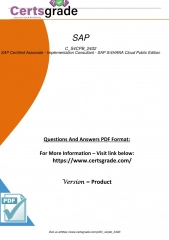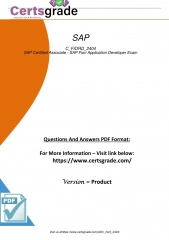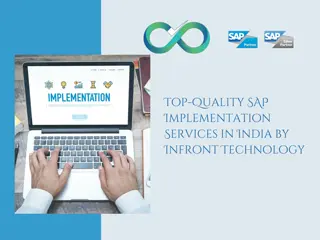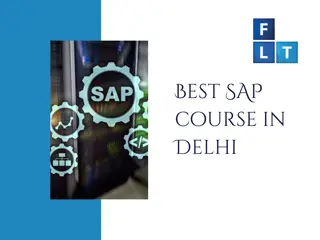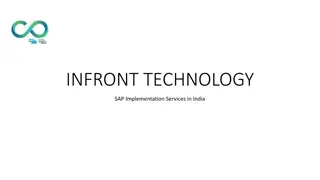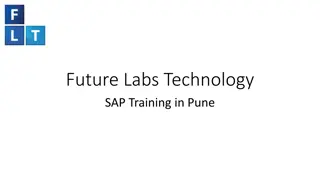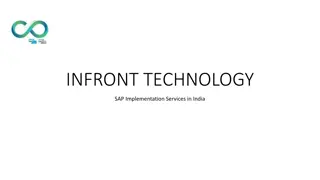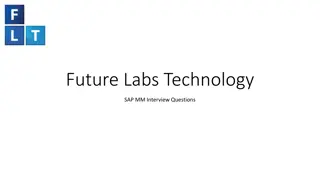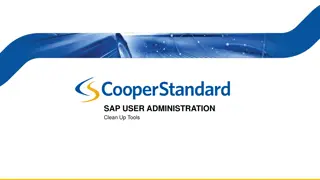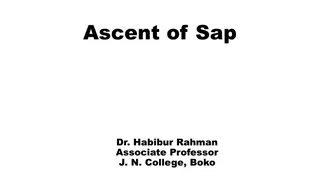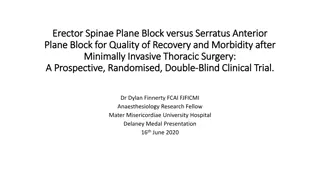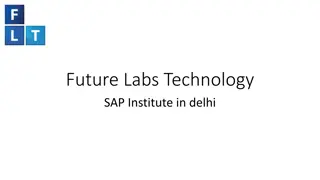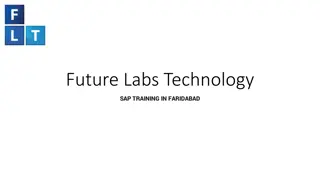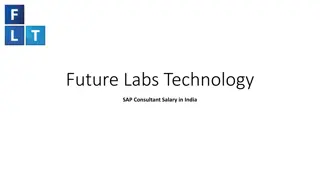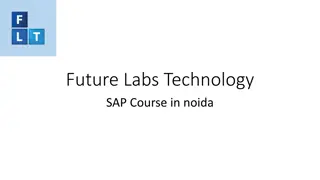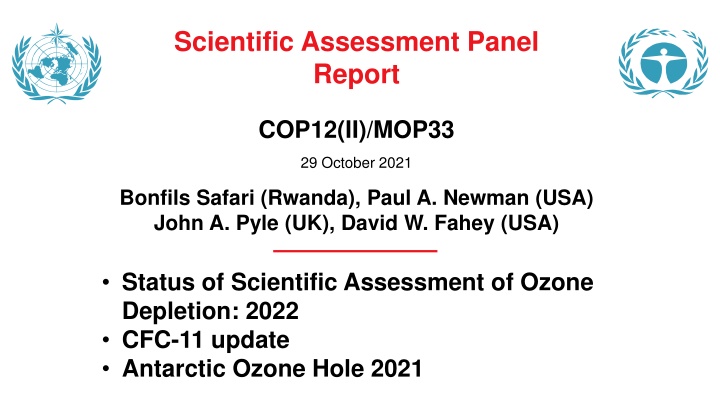
2022 Scientific Assessment of Ozone Depletion and Future Implications
Explore the comprehensive scientific assessment panel report on ozone depletion, highlighting key areas of focus for 2022. Key topics include the evaluation of global and polar stratospheric ozone, trends in trace gases relevant to the Montreal Protocol, and the interaction between ozone changes and the climate system. The report also addresses new findings on solar radiation management and potential effects on the stratospheric ozone layer. Dive into the latest research and policy scenarios in this authoritative assessment.
Download Presentation

Please find below an Image/Link to download the presentation.
The content on the website is provided AS IS for your information and personal use only. It may not be sold, licensed, or shared on other websites without obtaining consent from the author. If you encounter any issues during the download, it is possible that the publisher has removed the file from their server.
You are allowed to download the files provided on this website for personal or commercial use, subject to the condition that they are used lawfully. All files are the property of their respective owners.
The content on the website is provided AS IS for your information and personal use only. It may not be sold, licensed, or shared on other websites without obtaining consent from the author.
E N D
Presentation Transcript
Scientific Assessment Panel Report COP12(II)/MOP33 29 October 2021 Bonfils Safari (Rwanda), Paul A. Newman (USA) John A. Pyle (UK), David W. Fahey (USA) Status of Scientific Assessment of Ozone Depletion: 2022 CFC-11 update Antarctic Ozone Hole 2021
Scientific Assessment of Ozone Depletion: 2022 Steering committee: Julie Arblaster (Australia), Lucy Carpenter (UK), David Fahey (USA), Jianxin Hu (China), Ken Jucks (USA), Paul Newman (USA), David Plummer (Canada), John Pyle (UK), Bonfils Safari (Rwanda) with Sarah Doherty (USA, Report Coordinator)
The Parties Request Decision XXXI/2: Potential areas of focus for the 2022 quadrennial reports of the Scientific Assessment Panel, the Environmental Effects Assessment Panel and the Technology and Economic Assessment Panel 5. That the 2022 report of the Scientific Assessment Panel should include: a) An assessment of the state of the ozone layer and its future evolution; b) An evaluation of global and polar stratospheric ozone, including the Antarctic ozone hole and Arctic winter/spring ozone depletion and the predicted changes ; c) An evaluation of trends in the top-down derived emissions, abundances and fate in the atmosphere of trace gases of relevance to the Montreal Protocol on Substances that Deplete the Ozone Layer, .; d) An evaluation of consistency with reported production and consumption of those substances and the likely implications for the state of the ozone layer, including its interaction with the climate system; e) ..the interaction between changes in stratospheric ozone and the climate system, including possible future policy scenarios ..; f) Early identification and quantification, where possible, of any other issues of importance to the ozone layer ; g) An assessment of information and research related to solar radiation management and its potential effect on the stratospheric ozone layer; h) Relevant information on any newly detected substances that are relevant for the Montreal Protocol.
2022 Assessment Chapters Review Editors 1. Ozone-depleting substances Johannes Laube (Germany) Susann Tegtmeier (Canada) 2. Hydrofluorocarbons (HFCs) Qing Liang (USA) Matt Rigby (UK) 3. Global stratospheric ozone: Past, present & future Birgit Hassler (Germany) Paul Young (UK) 4. Polar stratospheric ozone: Past, present & future Martyn Chipperfield (UK) Michelle Santee (USA) 5. Stratospheric ozone changes and climate Harry Hendon (Australia) Hella Garney (Germany) 6. Stratospheric aerosol intervention and its potential effect on the stratospheric ozone layer Jim Haywood (UK) Simone Tilmes (USA) 7. Scenarios and information for policymakers John Daniel (USA) Stefan Reimann (Switzerland) Andreas Engel (Germany) Bo Yao (China) Steve Montzka (USA) Martin Vollmer (Switzerland) Jessica Neu (USA) Wolfgang Steinbrecht (Germany) + Authors and Contributors Susan Solomon (USA) Mark Weber (Germany) Amy Butler (USA) Amanda Maycock (UK) Valentina Aquila (USA) Karen Rosenlof (USA) Lambert Kuijpers (Netherlands) Don Wuebbles (USA)
2022 Assessment Timeline 2020 Discussion Paper circulated for comments by scientific community Lead Authors and Chapter Editors established Meetings of SSC & Lead Author teams (Feb.) Extended outlines of Chapters due (Apr. 16) SSC/LAs/REs review extended outlines (Apr. 19-30) 2021 Preliminary 1st order drafts (FODs) of Chapters due (Aug. 6) Internal review/edits of prelim. FODs (Aug. 6-31) 1st order drafts (FODs) of Chapters due (Sept. 30) External Review of FODs (Oct. 4-Nov. 12) 2nd order drafts (SODs) of Chapters due (Jan. 28) 2022 Draft of Exec. Summary messages due (March 11) Mtg. to review Chapters, key messages (March 21-25) 3rd order drafts (TODs) of Chapters due (May 13) Cited papers accepted for publication (May 31, 2022) Panel Review Meeting for Exec. Summary (Les Diablerets, Jul. 25-29)
The 2021 ozone hole is the 13th largest of 33 from 1988 2021 late-1990s to early-2000s period 2021 Ozone hole area (million km2) 24.3 M km2 2006 Other ozone hole metrics show similar behavior
Area of 2021 ozone hole was consistent with lower than average Antarctic temperatures and the decline in atmospheric chlorine and bromine colder than average Ozone hole area (million km2) Stratospheric chlorine and bromine amount (EESC) warmer than average
The 2021 ozone hole is smaller in area than the average ozone holes observed in the late-1990s to early-2000s period. Without a Montreal Protocol, the 2021 ozone hole is projected to have been larger, at around 26-27 M km2. The current stratospheric meteorology suggests a later than average ozone hole break-up in the November to December period.
Report on unexpected CFC-11 emissions was published earlier this year and discussed at OEWG 43 https://ozone.unep.org.science/assessment/sap
Presentation given at the 2021 Quadrennial Ozone Symposium by Montzka et al. CFC-11 ambient concentration 242 at remote sites 240 Eight NH sites NOAA data only 238 236 * 234 CFC-11 (ppt) Updated CFC-11 measurements indicate: that the accelerated atmospheric concentration decline observed after 2018 continued through 2020 and into the first part of 2021. Four SH sites 232 230 * 228 226 Global production banned in 2010 224 Projected declines 222 220 2010 2012 2014 2016 year 2018 2020 2022 * Montzka et al., 2018 (https://doi.org/10.1038/s41586-018-0106-2) * Montzka et al., 2021 (https://doi.org/10.1038/s41586-021-03260-5)
100 NOAA data 90 global emission (Gg yr-1) 80 2018 70 With the updated concentration data, global emissions for 2020 can now be derived. 60 2019 50 Emission, const. dynamics 40 2020 Emission with bias corrections (TOMCAT) 2020 global CFC-11 emissions - are even lower than those in 2019 - are substantially below 2008-2012 magnitudes. 30 1995 2000 2005 2010 year 2015 2020 - Red lines and points are best estimates that account for changing atmospheric dynamics in the derived emission estimate. These bias corrections are similarly derived by two 3-D models - Errors represent network uncertainties, but do not include lifetime uncertainties. Uncertainties on the updated results are not shown as they await updated data from the AGAGE network
Global atmospheric mole fractions of CFC-11: continued to drop rapidly through 2020 and the first part of 2021. 2020 global CFC-11 emissions: Are even lower than those in 2019 Are substantially below 2008-2012 values Are approaching expected levels, suggesting that much of the new use and unreported production may have stopped Important questions remain concerning banks, other species, etc. See Assessment!
100 100 100 The emission drop indicates the successful mitigation of much of the unexpected emission. Emission, const. dynamics Emission with bias corrections (TOMCAT) Emission with bias corrections (TOMCAT) Emission with bias corrections (TOMCAT) Emission, const. dynamics Emission, const. dynamics 90 90 90 global emission (Gg yr-1) global emission (Gg yr-1) global emission (Gg yr-1) 80 80 80 Lickley et al., 2020 2018 70 70 70 Are emissions back on track? 60 60 60 2019 50 50 50 Hard question to answer because the expected emission drop from old banks is uncertain. 40 40 40 2020 +6 30 30 30 TEAP expectation (bank emission from old production) 20 20 20 TEAP estimates emissions in 2020 from the new bank to be ~6 Gg yr-1. 10 10 10 2000 2000 2000 2005 2005 2005 2010 2010 2010 2015 2015 2015 2020 2020 2020 year year year Take home message #3: 2020 emissions are approaching expected levels, suggesting much of the new use and production may have stopped. Although emissions will remain enhanced from the newly created bank for some time.

